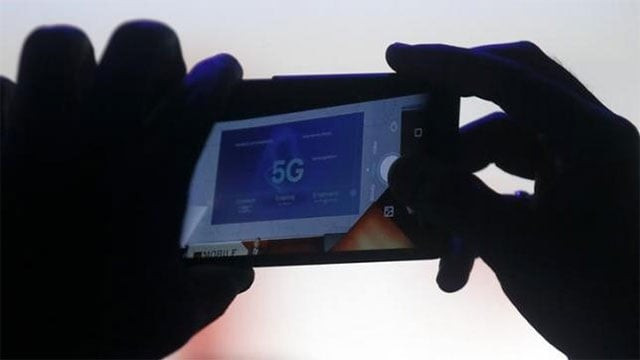What 5G Will Mean for You
With 5G, downloading feature-length movies could take less than five seconds

You may soon start hearing a lot about 5G, or the fifth generation of wireless technology. This technology is expected to leap ahead of current wireless technology, known as 4G, by offering mobile Internet speeds that will let people download entire movies within seconds, and it may pave the way for new types of mobile applications.
Yet many challenges exist before 5G becomes part of our daily lives. Carriers like AT&T, telecommunications manufacturers like Nokia and tech giants like Google are all battling to define global standards that will be needed before this technology becomes mainstream. These negotiations are expected to persist until at least 2019, so 5G cellphone networks will not become widespread in the United States or elsewhere until well into the next decade.
Nokia 5G pickup could begin as early as 2017: Chief executive
That isn’t stopping operators like Verizon Wireless and telecom equipment makers like Ericsson from pushing ahead with 5G trials. Many of these demonstrations will be on display at the Mobile World Congress, a tech and telecom trade show that begins in Barcelona on Monday.
A takeaway from the demos may be how companies are increasingly focused on three main areas that they think will underpin 5G networks whenever global standards are completed. Here’s a primer on what those areas are and what 5G could mean for you.
Downloading movies in seconds
Most mobile networks are already pretty fast, often reaching download speeds of more than 15 megabits per second. That lets smartphone users stream songs from Spotify, watch videos on YouTube or quickly check Facebook messages. Under plans for 5G, carriers will most likely offer mobile Internet speeds of more than 10 gigabits per second, or roughly 100 times faster than current networks (and significantly quicker than existing broadband). That would allow you to download high-definition movies almost instantaneously, even if you’re on the go.
According to global tech and telecom companies that are spending billions of dollars, combined, on the new wireless technology:
Pakistan’s LTE speeds one of the slowest in the world
1. With 5G, downloading feature-length movies could take less than five seconds.
2. With 4G, downloading feature-length movies could take as long as eight minutes.
Such technology will not come cheap. Carriers and telecom equipment makers will have to install new hardware like cellphone towers in rural areas and tiny mobile hot spots in dense urban areas to reach the 10 gigabits per second target. They will also have to increasingly rely on sophisticated software to manage the expected exponential jump in mobile data traffic. So just as most people’s cellphone bills have risen as they watch more videos and access other entertainment on their mobile devices, expect operators to charge a hefty premium for these new ultrafast services.
Networks that connect millions of new devices
5G is not just about speed. Companies are also preparing for millions of new wireless devices — such as smartwatches and other wearable items, as well as sensors embedded in industrial products — to be connected to the next generation of cellphone networks.
These devices will not use a lot of data (a sensor built into a highway, for instance, will need to send only small amounts of digital information across the network every couple of hours). But when combined, these hundreds of millions — potentially billions — of new sensors will require almost universal connectivity, or the ability to go online no matter where they are, forcing operators to extend their networks to practically every corner of a country.
Arrival of 3G, 4G: Date revenue for mobile operators increases threefold in last five years
These devices will potentially be an important new revenue stream for carriers worldwide. Many operators, particularly in Europe, are finding it tough to charge customers more for their increased use of mobile data. But if carriers can persuade businesses in industries like health care as well as industrial conglomerates like General Electric to sign up for new mobile Internet services that connect tiny sensors to the Internet, then operators may have stumbled onto a new way of making money.
Driverless cars with extremely fast response times
If 5G can offer ultrafast mobile Internet speeds, then why should you care about how quickly one device can communicate with another? In short, you shouldn’t. And as current mobile networks offer so-called latency, or digital response times, of around 50 to 80 milliseconds (the time it takes for a web page to load on your smartphone), reducing that speed to a mere millisecond — the goal under most companies’ 5G plans — might not add much to users’ mobile experiences.
Yet that extremely fast response time will be essential for many of the new services that will most likely be offered on 5G networks. A prime example is driverless cars. These machines will have to communicate almost in real time with everything around them to avoid cyclists and other obstacles. That can happen only if carriers offer one-millisecond latency, something that may become a lifesaver if autonomous cars become a reality.
This article originally appeared on The New York Times, a partner of The Express Tribune



















COMMENTS
Comments are moderated and generally will be posted if they are on-topic and not abusive.
For more information, please see our Comments FAQ